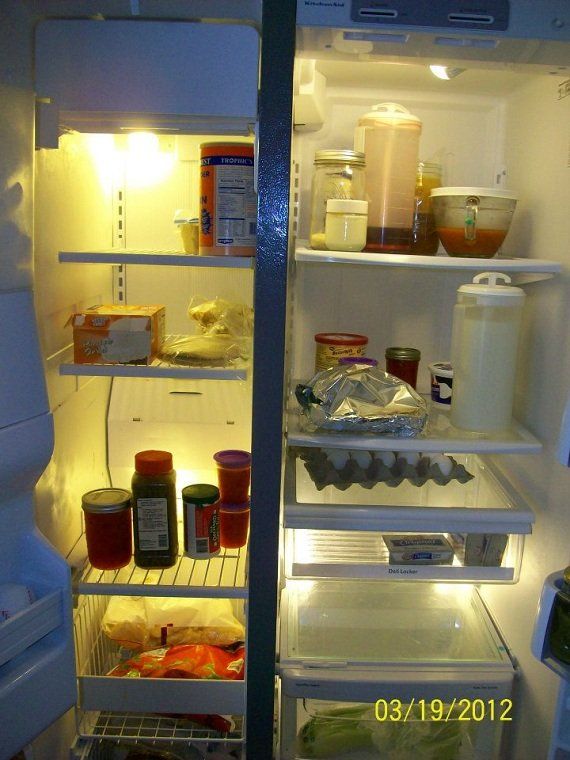Originally written Friday, March 11, 2011 Updated Thursday April 5, 2012
Refrigerator Tune-Up
I'm more than happy to consume a little power for a useful purpose and for more convenience and luxury. I do however abhor inefficiency. I don't like being lied to and kept in the dark about an appliance's excessive power consumption.

The tag on my fancy Energy Star Refrigerator boasts that it uses less energy than a 60 watt light-bulb. But when I actually measured the power consumption with a Kill-A-Watt meter, it uses 103 watts on average. That's almost double. Kitchen Aid? What gives?
Come to find out, their <60 watt bragging right is with the ice-maker in the off position. Who spends over $1000 on a high end fridge so they can have the convenience of a built-in-the door ice dispenser and never turn on the ice maker?
Energy Star ratings need to tell the whole truth and report the power consumption in all cases.
Stand-by power, compressor running power, defrosting, with ice-maker on/off, power factor, average energy usage. Don't just hand pick the best ones.
Still, you would think that a modern ice-maker would be smart enough to power itself down when the bin is full of ice. Not so! Even with a full bin of ice, my Energy Star fridge still puts the freezer into overtime, freezing ice that is already frozen.
Turning off the ice-maker brought the 5 day average power draw down to 80.6 watts. That's better but still not <60 watts. Adjusting the slider in the veggie crisper drawer, brought the average power down to 73 watts w/o the ice-maker and 102 with the ice-maker running.
I bought a fridge/freezer thermometer and took some direct measurements. Turns out, my freezer was way too cold. The temperature slider was not accurate at all. It was already on the 2nd to warmest setting but still too cold. That explains the rock-hard ice-cream. After adjusting the slider all the way warm, the freezer finally came up into the 0°-5° F range.
Finally I have a properly tuned, high efficiency refrigerator.
It takes my family about 2 weeks to deplete a full ice bin but only 1 day for the overzealous ice-maker to replenish the bin. By simply turning the ice-maker off on the 2nd day and leaving it off until empty, the fridge average power draw is only 60 watts. That's more like it.
Update 4/5/2012: It's been over a year since my last time I measured the efficiency and performance of my refrigerator. I was surprised to find the average power consumption had gone up again. The average power consumption (according to the kill-a-watt meter), was 78 watts.
Thinking this was a fluke, I let the Kill-A-watt meter run for almost 2 weeks, collecting data. Every few days, the average was still about 78 watts. Granted, we don't have as much food in the fridge this time around but still, I would have thought it would be lower than that. The over-zealous ice-maker spent most of its time in the off position for this measurement.
I decided to clean behind and under the fridge. It was dirty but not too bad. The coils on my fridge are hidden underneath and are difficult if not impossible to access. Sadly, I admit, until this week, I have never physically seen them before, let alone actually cleaned them.
I removed the back cover, grabbed a head-lamp and looked at the coils. Nasty! They were clogged so full of dust, it's amazing my fridge even works at all. The coil is folded back on itself about 6 times and cleaning the whole thing properly is nearly impossible. Using a headlamp, a vacuum cleaner and a lint brush, I performed an endoscopic cleaning on the coil, getting it pretty clean.

Before (top) and After (bottom) cleaning of the coil on the refrigerator.
After a 2-day sample off of the kill-a-watt meter, the average power consumption went down by 10 watts and is now only 68 watts. That's a 12.8% improvement in efficiency. This is essentially saving me $10/year on electricity.
Sixty-Eight watts is better than 78 watts but that is still not 60 watts as claimed by the manufacturer.
It is said that an empty fridge uses more power than a full one. That could be why I am using a little more power too.

